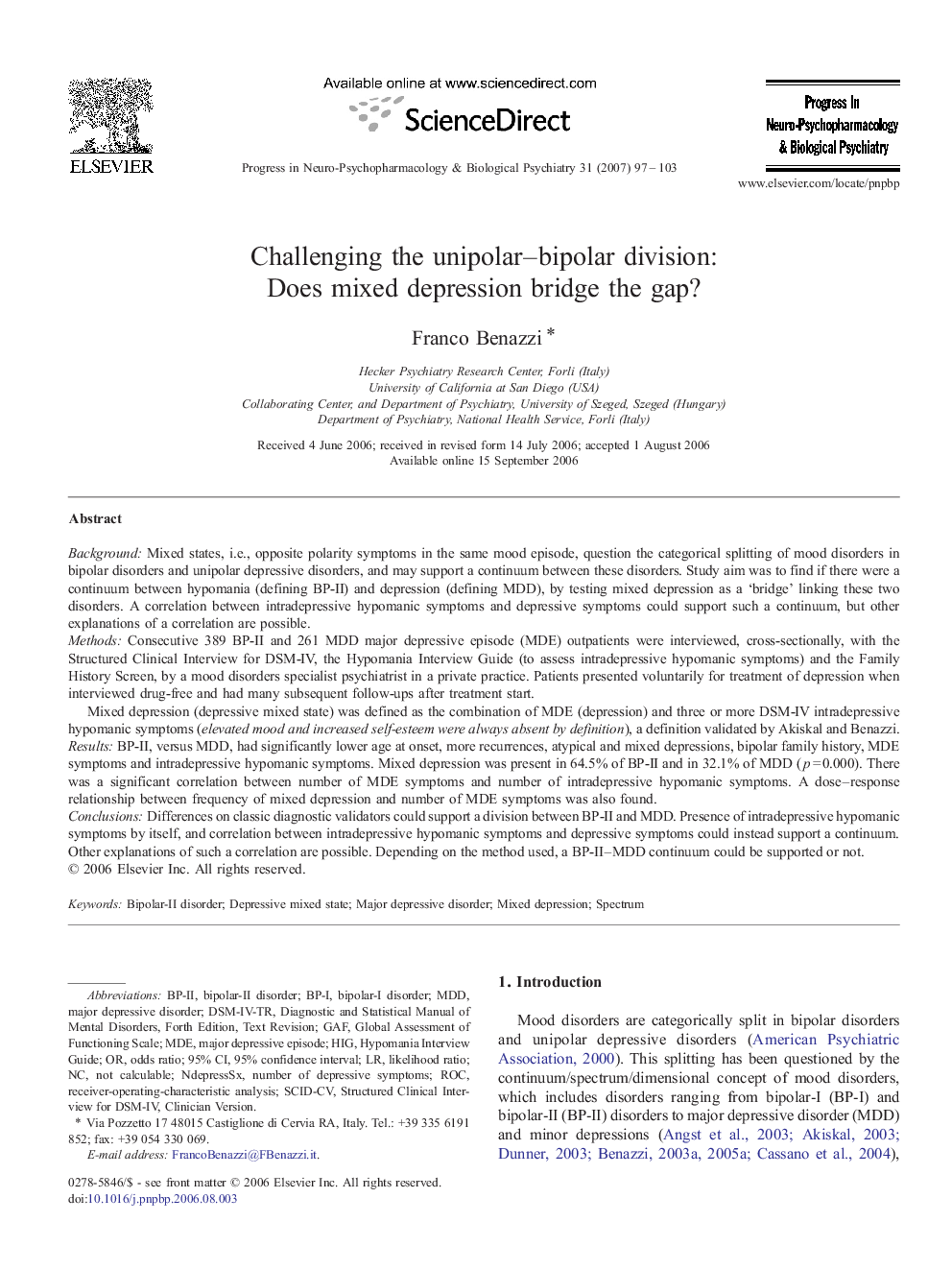| Article ID | Journal | Published Year | Pages | File Type |
|---|---|---|---|---|
| 2566017 | Progress in Neuro-Psychopharmacology and Biological Psychiatry | 2007 | 7 Pages |
BackgroundMixed states, i.e., opposite polarity symptoms in the same mood episode, question the categorical splitting of mood disorders in bipolar disorders and unipolar depressive disorders, and may support a continuum between these disorders. Study aim was to find if there were a continuum between hypomania (defining BP-II) and depression (defining MDD), by testing mixed depression as a ‘bridge’ linking these two disorders. A correlation between intradepressive hypomanic symptoms and depressive symptoms could support such a continuum, but other explanations of a correlation are possible.MethodsConsecutive 389 BP-II and 261 MDD major depressive episode (MDE) outpatients were interviewed, cross-sectionally, with the Structured Clinical Interview for DSM-IV, the Hypomania Interview Guide (to assess intradepressive hypomanic symptoms) and the Family History Screen, by a mood disorders specialist psychiatrist in a private practice. Patients presented voluntarily for treatment of depression when interviewed drug-free and had many subsequent follow-ups after treatment start.Mixed depression (depressive mixed state) was defined as the combination of MDE (depression) and three or more DSM-IV intradepressive hypomanic symptoms (elevated mood and increased self-esteem were always absent by definition), a definition validated by Akiskal and Benazzi.ResultsBP-II, versus MDD, had significantly lower age at onset, more recurrences, atypical and mixed depressions, bipolar family history, MDE symptoms and intradepressive hypomanic symptoms. Mixed depression was present in 64.5% of BP-II and in 32.1% of MDD (p = 0.000). There was a significant correlation between number of MDE symptoms and number of intradepressive hypomanic symptoms. A dose–response relationship between frequency of mixed depression and number of MDE symptoms was also found.ConclusionsDifferences on classic diagnostic validators could support a division between BP-II and MDD. Presence of intradepressive hypomanic symptoms by itself, and correlation between intradepressive hypomanic symptoms and depressive symptoms could instead support a continuum. Other explanations of such a correlation are possible. Depending on the method used, a BP-II–MDD continuum could be supported or not.
